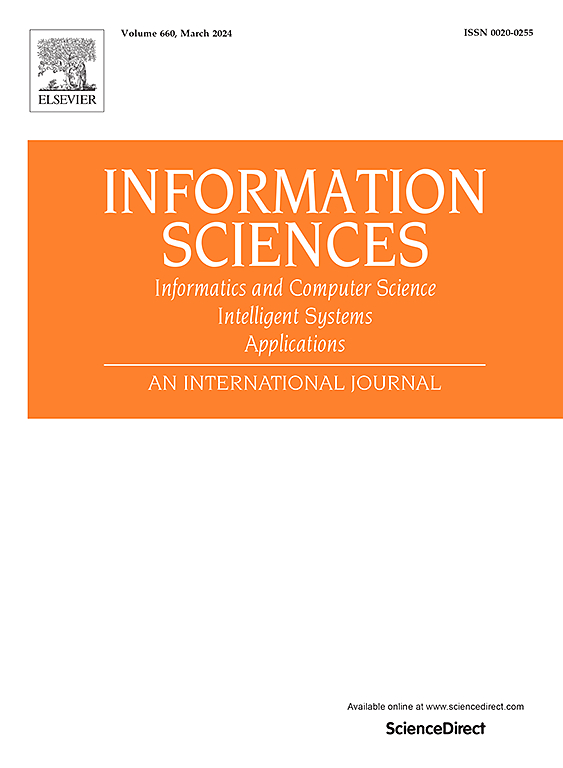通过自适应锚图学习快速直接的共聚类
IF 8.1
1区 计算机科学
0 COMPUTER SCIENCE, INFORMATION SYSTEMS
引用次数: 0
摘要
谱聚类面临三个主要挑战:常规图构建和特征值分解带来的高计算成本,“松弛和再离散化”策略导致的重要信息损失和解偏差,以及固定图不能适应不可靠相似性的不灵活性。为了解决这些问题,提出了基于自适应锚图学习(FDC2)的快速直接共聚类方法。该方法动态学习锚图,有效地解决了共聚类问题。FDC2使用原始数据、锚点和不断变化的指示矩阵迭代地改进锚点图,从而降低计算复杂性,同时允许修改不可靠的相似性。将学习到的锚点相似度矩阵作为二部图的权重矩阵,便于原始数据和锚点同时聚类。为了直接有效地求解离散指标矩阵,采用了坐标下降法。大量的实验结果表明,FDC2显著减少了计算时间,提供了优越的聚类结果。本文章由计算机程序翻译,如有差异,请以英文原文为准。
Fast and direct co-clustering via adaptive anchor graph learning
Spectral clustering faces three main challenges: high computational costs arising from regular graph construction and eigenvalue decomposition, important information loss and solution deviation due to the ‘relaxation and re-discretization’ strategy, and the inflexibility of fixed graphs that fail to adapt to unreliable similarities. To address these issues, Fast and Direct Co-Clustering via adaptive anchor graph learning (FDC2) is proposed. This method dynamically learns the anchor graph and efficiently solves the co-clustering problem. FDC2 iteratively refines the anchor graph using raw data, anchors, and an evolving indicator matrix, thus reducing computational complexity while enabling the modification of unreliable similarities. The learned anchor similarity matrix is used as the weight matrix in a bipartite graph, facilitating the simultaneous co-clustering of raw data and anchors. To directly and efficiently solve the discrete indicator matrix, a coordinate descent method is employed. Extensive experimental results demonstrate that FDC2 significantly reduces computational time and delivers superior clustering results.
求助全文
通过发布文献求助,成功后即可免费获取论文全文。
去求助
来源期刊

Information Sciences
工程技术-计算机:信息系统
CiteScore
14.00
自引率
17.30%
发文量
1322
审稿时长
10.4 months
期刊介绍:
Informatics and Computer Science Intelligent Systems Applications is an esteemed international journal that focuses on publishing original and creative research findings in the field of information sciences. We also feature a limited number of timely tutorial and surveying contributions.
Our journal aims to cater to a diverse audience, including researchers, developers, managers, strategic planners, graduate students, and anyone interested in staying up-to-date with cutting-edge research in information science, knowledge engineering, and intelligent systems. While readers are expected to share a common interest in information science, they come from varying backgrounds such as engineering, mathematics, statistics, physics, computer science, cell biology, molecular biology, management science, cognitive science, neurobiology, behavioral sciences, and biochemistry.
 求助内容:
求助内容: 应助结果提醒方式:
应助结果提醒方式:


